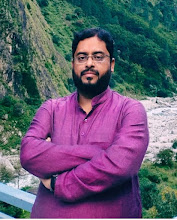 The
The Description
The current temple structure was constructed in 1565 by Chilarai of the Koch dynasty in the style of medieval temples. The form of the earlier structure, destroyed by the Kala Pahar, is unknown. The current structure has a beehive-like shikhara with delightful sculptured panels and images of Ganesha and other Hindu gods and goddesses on the outside.The temple consists of three major chambers. The western chamber is large and rectangular and is not used by the general pilgrims for worship. The middle chamber is a square, with a small idol of the Goddess, a later addition. The walls of this chamber contain sculpted images of Naranarayana, related inscriptions and other gods. The middle chamber leads to the sanctum sanctorum of the temple in the form of a cave, which consists of no image but a natural underground spring that flows through a yoni-shaped cleft in the bedrock. During the Ambuvaci festival each summer,the menstruation of the Goddess Kamakhya is celebrated. During this time, the water in the main shrine runs red with iron oxide resembling menstrual fluid.
It is likely that this is an ancient Khasi sacrificial site, and worshiping here still includes sacrifices. Devotees come every morning with goats to offer to Shakti.
The Kalika Purana, an ancient work in Sanskrit describes Kamakhya as the yielder of all desires, the young bride of Shiva, and the giver of salvation.Shakti is known as Kamakhya.
Worship
The Kamakhya Temple in Assam
The goddess is worshiped according to both the Vamachara (Left-Hand Path) as well as the Dakshinachara (Right-Hand Path) modes of worship (Kakati, 1989 p45). Offerings to the goddess are usually flowers, but might include animal sacrifices. In general female animals are exempt from sacrifice, a rule that is relaxed during mass sacrifices (Kakati 1989, p65).
Legends
According to the Kalika Purana, Kamakhya Temple
Four Adi Shakti Peethas
The great religious texts like the Shiva Purana, the Kalika Purana and the AstaShakti recognize four major Shakti Peethas (centers), like Bimala (Pada Khanda) ( Inside Puri Jagannath Temple), Tara Tarini (Stana Khanda, Breasts)(Near Berhampur, Orissa), Kamakshi (Yoni khanda)(Near Gowhati, Assam) and Dakhina Kalika (Mukha khanda) (Kolkata, West Bengal) originated from the limbs of the Corpse of Mata Sati. The Astashakti and Kalika Purana clearly says (IN SANSKRIT):
Bimala Pada khandancha,Sthana khandancha Tarini (Tara Tarini), Kamakshya Yoni khandancha,
Mukha khandancha Kalika (Dakshina Kalika)
Anga pratyanga sanghena
Vishnu Chakra Kshyta nacha……..
Kamakhya during Ahom era
According to a legend the Koch Bihar royal family was banned by Devi herself from offering puja at the temple. In fear of this curse, to this day no descendants of that family dares to even look upward towards the Kamakhya hill while passing by.
Without the support of the Koch royal family the temple faced lot of hardship. By the end of 1658, the Ahoms under king Jayadhvaj Singha had conquered the Lower Assam and their interests in the temple grew. In the decades that followed the Ahom kings, all who were either devout Shaivite or Shakta continued to support the temple by rebuilding and renovating it.
Rudra Singha (reign 1696 to 1714) was a devout Hindu and as he grew older he decided to formally embrace the religion and become an orthodox Hindu by being initiated or taking sharan of a Guru, who would teach him the mantras and become his spiritual guide. But, he could not bear the thought of humbling himself in front a Brahmin who is his subject. He therefore sent envoys to Bengal and summoned Krishnaram Bhattacharyya, a famous mahant of Shakta sect who lived in Malipota, near Santipur in Nadia district. The mahant was unwilling to come, but consented on being promised to be given the care of the Kamakhya temple to him. Though the king did not take sharan, he satisfied the mahant by ordering his sons and the Brahmins in his entourage to accept him as their spiritual guru.
When Rudra Singha died, his eldest son Siba Singha (reign 1714 to 1744), who became the king, gave the management of the Kamakhya temple and along with it large areas of land (Debottar land) to Mahant Krishnaram Bhattacharyya. The Mahant and his successors came to be known as Parbatiya Gosains, as they resided on top of the Nilachal hill. Many Kamakhya priests and modern Saktas of Assam are either disciples or descendants of the Parbatiya Gosains, or of the Nati and Na Gosains.
Festivals
Being the centre for Tantra worship this temple attracts thousands of tantra devotees in an annual festival known as the Ambuvaci. Another annual celebration is the Manasha Puja. Durga Puja is also celebrated annually at Kamakhya during Navaratri in the autumn. This five day festival attracts several thousand visitors.
Source: Wikipedia

No comments:
Post a Comment